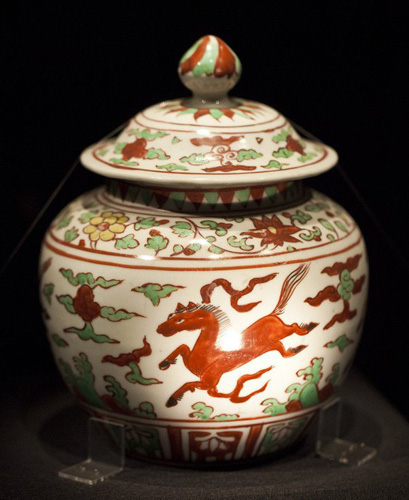 |
|
Polychrome Covered Jar with Flying Horse Design
Jiajing Reign (1522-1566), Ming Dynasty (1368-1644)
The Palace Museum
|
Wu cai 五彩
Another technique developed in the Ming Dynasty is wu cai (五彩), or “five colors” which employs a full palette of polychrome enamels or mixed colors. Often larger than dou cai wares, wu cai ones often feature bold colors and more intricate designs. The best-known wu cai wares are from Wanli reign (1573-1620).
Qing Dynasty also saw great improvement of chinaware. Famille rose (pink), jaune (yellow), noire (black) and verte (green) were overglaze enamel porcelains made from the Kangxi period (1662-1722) and later.
Kwon-glazed porcelain 广彩
Kwon-glazed porcelain is named so because it originated from Guangzhou, Guangdong province. In this special kind, white glazed porcelain from Jingdezhen were brought to Guangzhou to be painted and fired with imported Western material and technique.
Kwon-glazed porcelain was mainly sold abroad.
The craftsmen applied traditional Chinese painting elements to illustrate Western historical stories, religious themes, myths and more.
We recommend:
